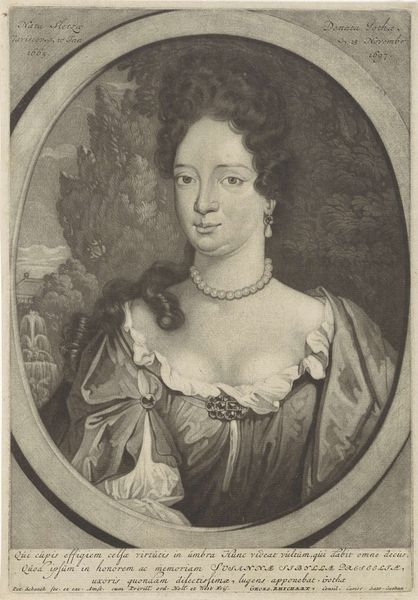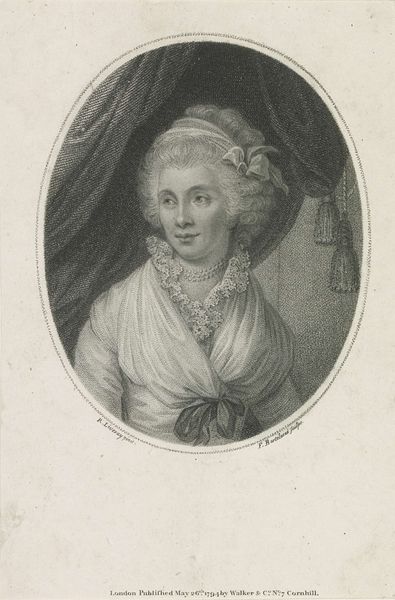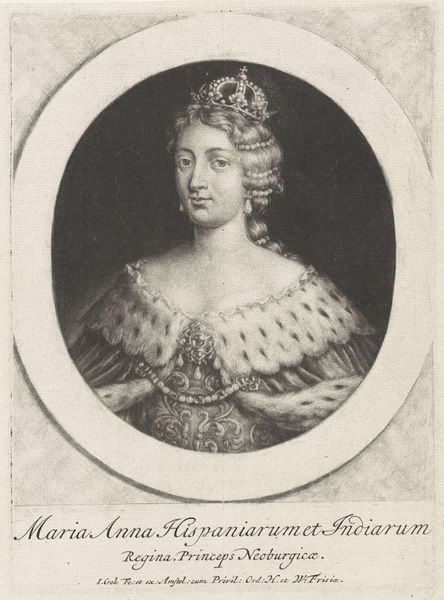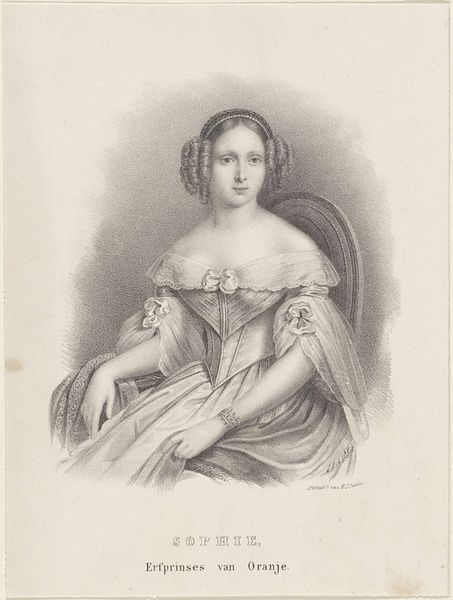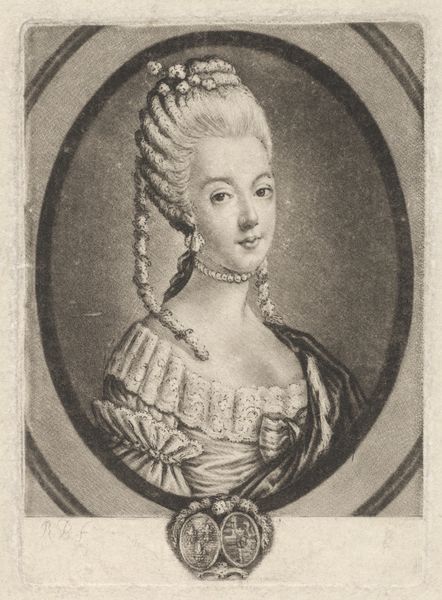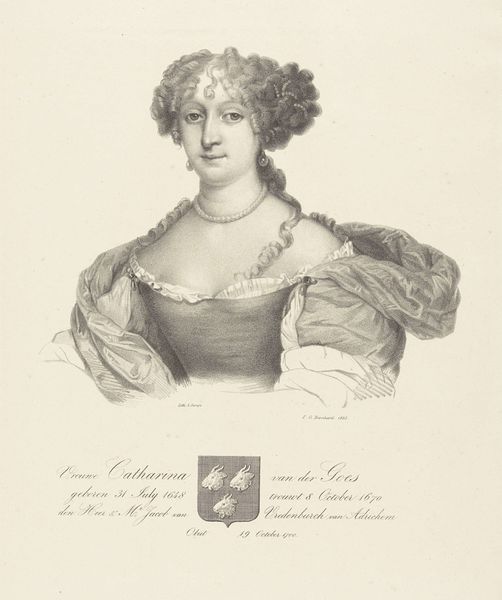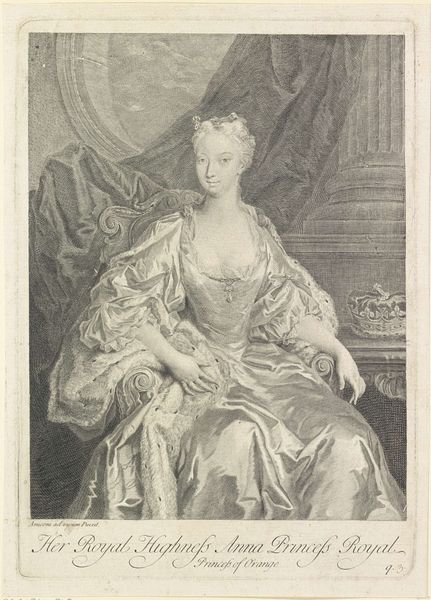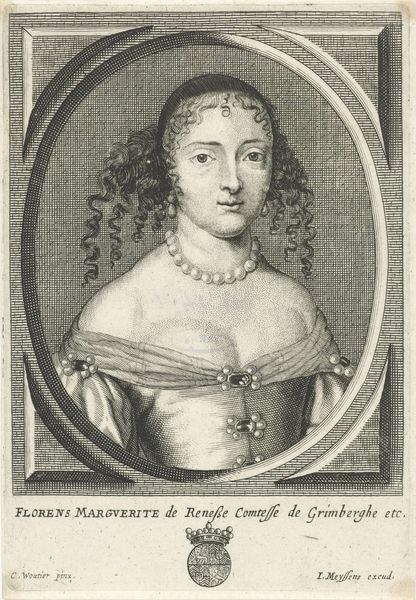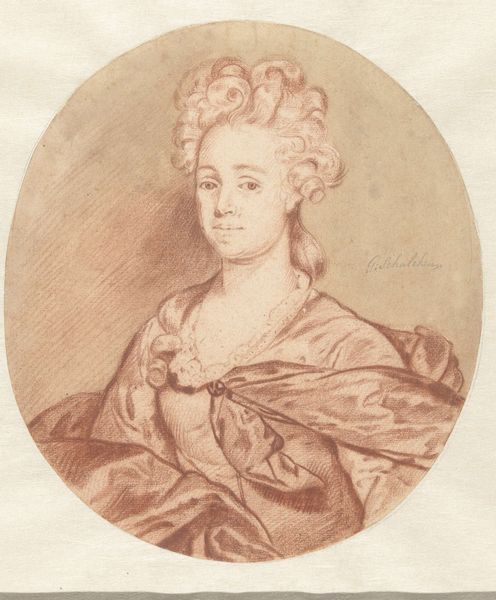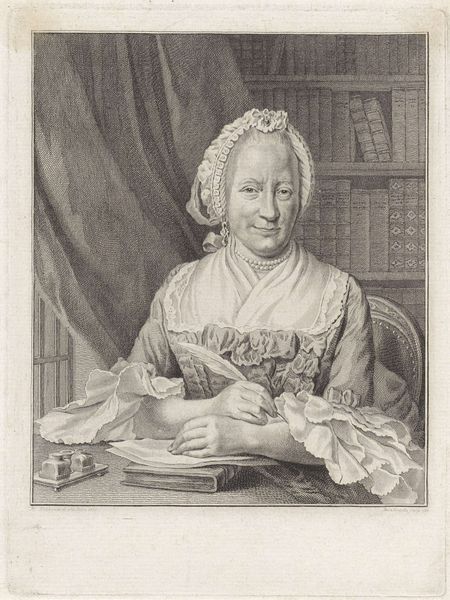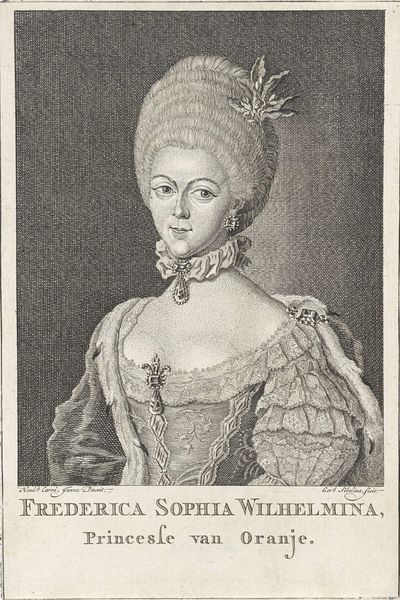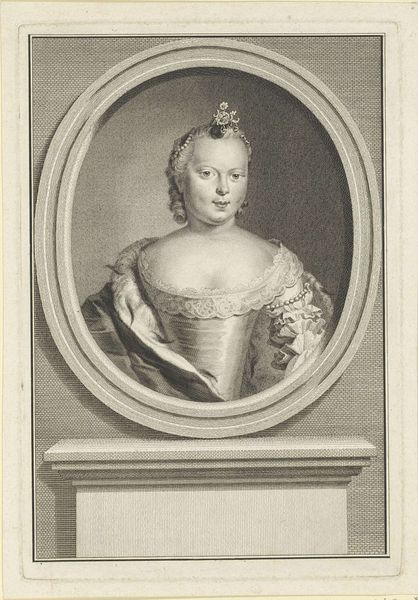
drawing, pencil
#
portrait
#
pencil drawn
#
drawing
#
charcoal drawing
#
figuration
#
pencil drawing
#
pencil
#
line
#
portrait drawing
#
history-painting
#
academic-art
#
realism
Dimensions: height 205 mm, width 147 mm
Copyright: Rijks Museum: Open Domain
Curator: What a delicately rendered drawing. It seems to capture the sitter's likeness with remarkable sensitivity. Editor: Yes, there's an undeniable grace. My first impression is its almost ethereal lightness, like a whisper on paper. What can you tell me about it? Curator: This is Hendrik Pothoven's "Portret van Carolina, prinses van Oranje-Nassau," dating from 1735 to 1807. Pothoven primarily worked as a painter and drawer within courtly circles, so it’s reasonable to see the social role informing his artworks. The medium is pencil, demonstrating his mastery of line and shading. Editor: Pencil…simple, yet capable of conveying so much. The hatching and stippling give it depth, particularly in the drapery. How do you think Pothoven approached such a subject, and to what effect? Curator: Given that Carolina was a princess, Pothoven's approach would have been mindful of the representational function required of royal portraiture. He'd have to convey status and character. Notice how the gaze is direct, yet not confrontational. It projects an image of accessible authority, which could shape perceptions about the role of the Dutch court at that time. Editor: Precisely. Look at the lace on her gown, painstakingly rendered. The quality of materials signified rank. Curator: Of course. And considering the wider scope of academic art during this era, one can appreciate the detailed execution while pondering questions about artistry and social functions of representation. Editor: Absolutely. It's fascinating how even in such a seemingly simple medium, we find layered social significance embedded within. Curator: Indeed. Pothoven’s skillful application reminds us how even a “mere” drawing could serve profound social and political roles. Editor: Thank you. I agree completely; reflecting on its material origins helps uncover even more historical dimensions, revealing both the elegance of craftsmanship and insights into the social structure.
Comments
No comments
Be the first to comment and join the conversation on the ultimate creative platform.

